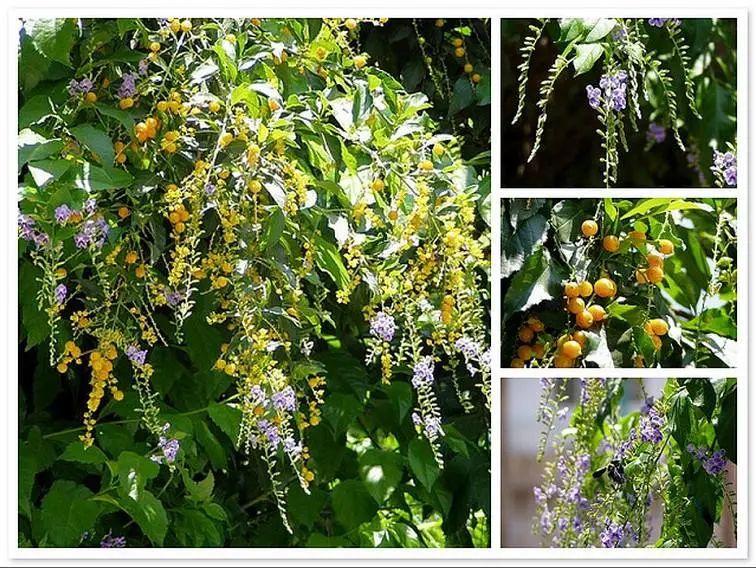
1
Herb Encyclopedia
Lian Qiao (Forsythia suspensa): A deciduous shrub belonging to the family Oleaceae, Lian Qiao blooms in early spring before the leaves appear, producing fragrant yellow flowers that cover the branches, making it an excellent ornamental shrub. It can grow up to 3 meters tall, with branches that are clustered, yellowish, and arching downwards, hollow inside.
The leaves are opposite, either simple or trifoliate, ovate or ovate-elliptic with serrated edges. The flowers are yellow, occurring in clusters of 1-3 in the leaf axils; the fruit is ovoid, oval, or elongated oval with a beak-like tip and a surface with sparse pores; the fruit stalk is 0.7-1.5 cm long. The flowering period is from March to April, and the fruiting period is from July to September.
It grows in shrublands, under forests, or in grasslands, often found in valleys or sparse forests at altitudes of 250-2200 meters. The fruit can be used medicinally.





2
Functions and Indications
Functions: Lian Qiao has the effects of clearing heat and detoxifying, reducing swelling and dispersing nodules, and dispersing wind-heat.
Indications: It is used for conditions such as carbuncles, lymphadenitis, mastitis, erysipelas, wind-heat colds, initial stages of warm diseases, heat entering the nutritive level, high fever with thirst, delirium with rashes, and painful heat stranguria.
Taste and Properties: Bitter, cool.
Meridians: Enters the Heart, Liver, and Gallbladder meridians.
3
Main Varieties
01
Qin Lian Qiao
Qin Lian Qiao is found in southeastern Gansu, western Shaanxi, western Henan, and northeastern Sichuan.
It is a deciduous shrub, 1-3 meters tall, with upright cylindrical branches that are gray-brown or gray, sparsely dotted with round pores, and have thin, membranous fissures. The young branches are slightly quadrangular, brown or light brown, hairless, often curved like a sickle, and have a plate-like pith.
It grows in hilly or low mountainous forests, in valleys, or along riverbanks, at altitudes of 800-3200 meters.
02
Li Jiang Lian Qiao
Li Jiang Lian Qiao is found in northwestern Yunnan and Muli, Sichuan, growing in shrublands, under forests, or in mixed mountain forests. It is very similar to Qin Lian Qiao, differing only in that the latter has entire, hairless leaves, while Li Jiang Lian Qiao may have hairy and sparsely serrated leaves, with other characteristics being essentially the same.
03
Dong Bei Lian Qiao
Dong Bei Lian Qiao is a deciduous shrub of the Oleaceae family, originally from the Fenghuang Mountain area in Liaoning Province, and cultivated in all three northeastern provinces. The flowers are yellow, blooming before the leaves in early spring, creating a golden spectacle. When planted in clusters, they are particularly striking. The flowering period is in May, and the fruiting period is in September. The stems, leaves, fruits, and roots can all be used medicinally.
04
Qi Yi Lian Qiao
Qi Yi Lian Qiao is found in Shan Yang, Shaanxi, growing along mountain paths. It is a deciduous or climbing shrub, 1.2-3 meters tall, with cylindrical, hairless, brown branches that are densely covered with raised pores. The young branches are light brown, quadrangular, and have hollow internodes. Its characteristics are intermediate between Lian Qiao and Qin Lian Qiao, differing in that Qi Yi Lian Qiao has entire leaves with hairs on both sides, while Qin Lian Qiao has hollow internodes in its branches and a fruit stalk length of 1.2-2 cm.
05
Yuan Ye Lian Qiao
Yuan Ye Lian Qiao is native to Korea and cultivated in northeastern China. It grows 1-1.5 meters tall, with spreading branches, and the young branches are gray-yellow or light brown, hairless, turning gray or dark gray with age, slightly ridged, and have plate-like pith.
5
Dosage and Administration
01
Stewed Soup
Take an appropriate amount of jujube and black beans, wash them, soak them in clean water, then cook them in a pot to make porridge. Add Lian Qiao and switch from high heat to low heat, cooking until the black beans are soft and ready to eat.
02
Tea
Take an appropriate amount of Lian Qiao and honeysuckle, crush them, then mix with white chrysanthemum, pack into a bag, tie it tightly to make a tea bag, and brew with hot water. It can be steeped 4-5 times.

6
Contraindications
-
Not suitable for those with spleen and stomach deficiency.
-
Not suitable for those with yin deficiency and internal heat, or deficiency fire.
-
Not suitable for those with qi deficiency and fever, or for those with carbuncles that have already suppurated and have a pale color.
-
Not suitable for those with spleen and stomach cold deficiency, or kidney yang deficiency, when taking large amounts of this single herb.
-
Not suitable for those with blood in urine, night sweats, low fever, vomiting blood, bloody stools, nasal bleeding, or bleeding gums due to yin deficiency and blood heat; avoid long-term use of large amounts of this single herb.
-
Not suitable for those with chronic gastroenteritis, chronic hepatitis, liver cirrhosis, or chronic diarrhea; avoid long-term use of large amounts.
-
Not suitable for those with low blood pressure; avoid long-term high doses.
Editor: Yi Shumin Layout: Yi Shumin Chief Editors: Cao Yuxuan, Huang Jialu Reviewers: Cao Yuxuan, Huang Jialu


